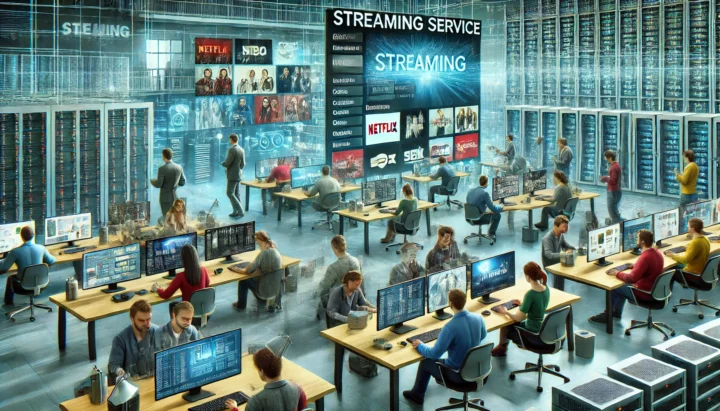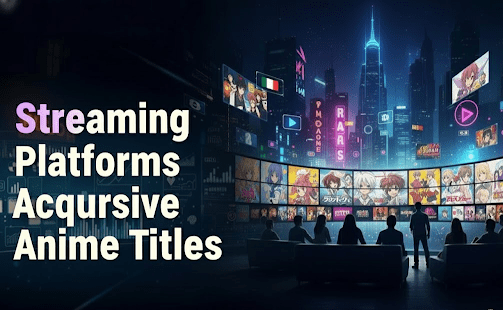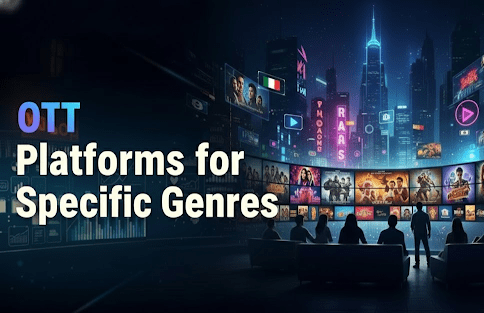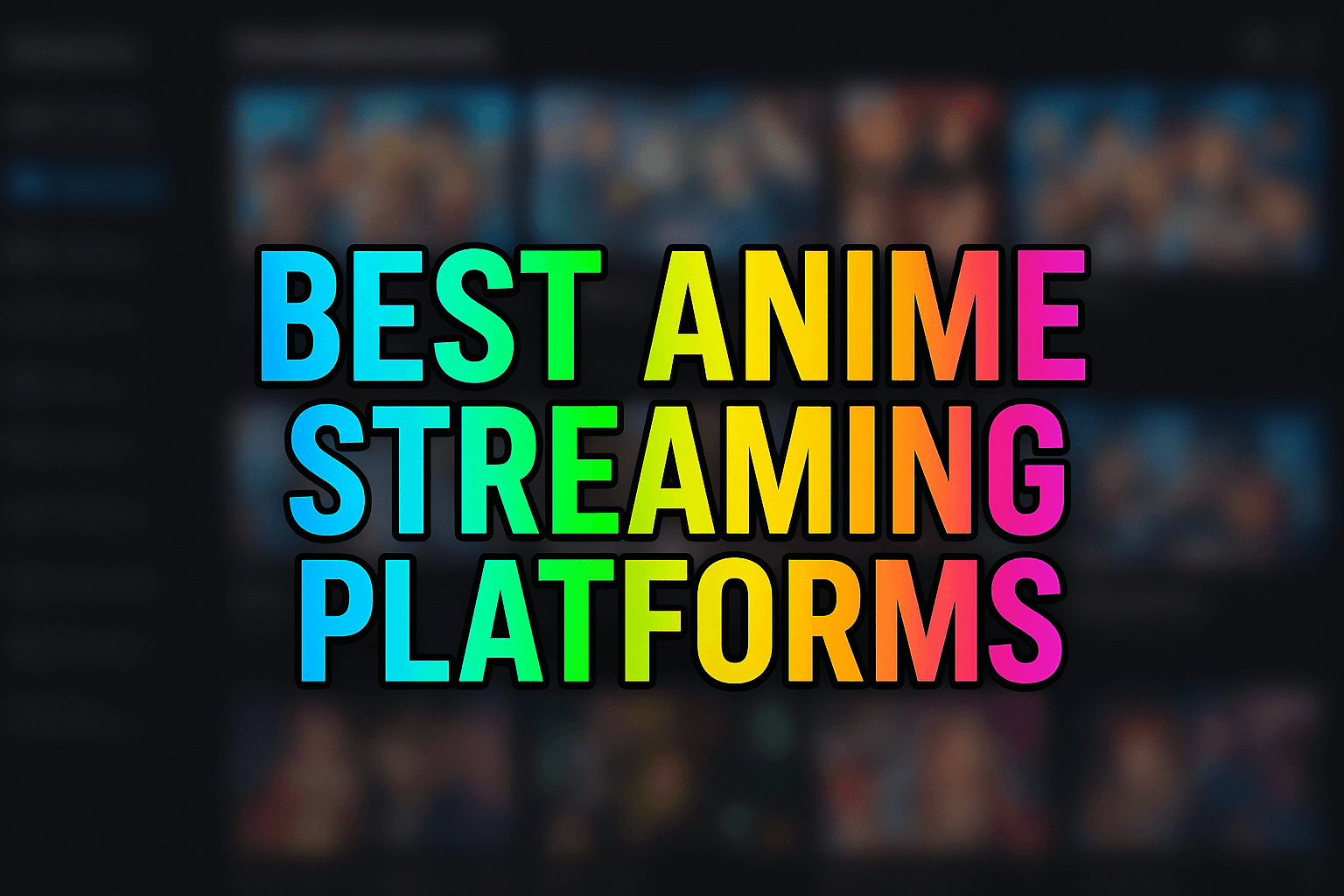Introduction
For content creators and distributors in the anime industry, Netflix presents a lucrative market. But the process of selling anime content to Netflix isn’t straightforward. You need to know how to pitch, negotiate licensing deals, and ensure your anime stands out. Vitrina offers insights and tools to help you prepare your pitch and navigate industry challenges.
Key Takeaways
| Step | Description |
| 1 | Research Netflix’s audience and content preferences |
| 2 | Prepare a professional pitch tailored to Netflix’s requirements |
| 3 | Use Vitrina’s tools to connect with key decision-makers at Netflix |
| 4 | Negotiate the licensing and distribution terms |
| 5 | Understand Netflix’s acquisition process for anime |
Netflix’s interest in anime continues to grow, and it’s an attractive platform for both original and licensed series. To get your foot in the door, you’ll need to understand Netflix’s preferences for anime genres, from action-packed shonen to thought-provoking seinen.
Table of content
- Introduction to Selling and Licensing Anime Content to Netflix
- Understanding Netflix’s Acquisition Process for Anime
- Strategies for Distributing Anime Content to Netflix
- Pain Points: Challenges and Rejections in Anime Licensing
- Comparative Analysis: Netflix vs. Other Streaming Platforms
- Licensing Costs and Fees
- Working with Licensing Agencies and Services
- FAQs
- Conclusion
- FAQs
Want to License Your Anime to Netflix?

Understanding Netflix’s Acquisition Process for Anime
To succeed in licensing anime to Netflix, it’s important to grasp their content acquisition process. Netflix actively seeks out anime that aligns with their brand and appeals to their diverse global audience. They have an internal team dedicated to identifying content that resonates with specific demographics.
How Netflix Acquires Anime Content
- Content submission: Submitting anime content to Netflix requires an understanding of the content acquisition pipeline. Netflix evaluates pitches based on their internal metrics, trends, and the overall fit with their brand.
- Licensing models: Netflix works with both exclusive rights and non-exclusive licenses, depending on their strategy for regional versus global distribution.
- Collaboration with licensing agencies: Netflix often works with anime licensing agencies to facilitate content deals and negotiations.
If you’re looking to distribute anime to Netflix, Vitrina can provide data on anime trends, helping you align your content with the most sought-after genres.
Best Practices for Submitting Anime to Netflix
- Make sure your content fits Netflix’s current genre preferences.
- Present high-quality content with a compelling story.
- Leverage Vitrina to connect with relevant buyers and gain insights into Netflix’s evolving acquisition priorities.
Strategies for Distributing Anime Content to Netflix

Once your content is approved by Netflix, the next step is distribution. To maximize your anime’s reach, you need a distribution strategy that aligns with Netflix’s global streaming model. This requires a deep understanding of how Netflix tailors content for different markets.
Key Distribution Strategies
- Localized content: Ensure that your anime is well-optimized for different regions. Netflix often emphasizes localization, from subtitles to dubbing, which helps anime connect with global audiences.
- Promotion on Netflix: Netflix’s built-in recommendation algorithm promotes new content based on user behavior. Your anime must have strong appeal to get featured in these algorithms.
- Leveraging data insights: With tools like Vitrina, you can analyze viewer trends and predict what anime will resonate in different regions.
Vitrina enables content creators to gather valuable insights, such as what type of anime genres are gaining traction in specific regions. This can help you tweak your distribution strategy to match regional demands.
Confused About Anime Licensing Fees?

Pain Points: Challenges and Rejections in Anime Licensing
While Netflix offers tremendous opportunities, it also comes with challenges. Many anime content pitches are rejected due to a mismatch between the content and Netflix’s requirements. Understanding these pain points can help you improve your chances of success.
Common Challenges in Selling Anime to Netflix
- Content quality: Netflix has high standards when it comes to the quality of anime. If your anime does not meet their expectations in terms of animation, story, or production value, it may get rejected.
- Genre oversaturation: Certain anime genres, like isekai or shonen, are highly competitive. Netflix may already have enough similar content, making it harder for new entries to stand out.
- Licensing fees: Netflix’s licensing fees can be high, and smaller studios may struggle to meet the financial requirements.
How to Overcome These Obstacles
- Improve the visual quality and storyline of your anime.
- Consider pitching unique or niche genres that haven’t yet been saturated on Netflix.
- Use Vitrina’s insights on licensing fees to better negotiate and position your content.
Comparative Analysis: Netflix vs. Other Streaming Platforms
While Netflix is a giant in anime streaming, it’s not the only player in the game. Hulu, Crunchyroll, and Amazon Prime also have strong anime offerings. Depending on your goals, you may want to explore these platforms for distribution opportunities as well.
Comparing Netflix and Other Streaming Platforms
| Platform | Strengths | Weaknesses |
| Netflix | Global reach, strong original anime series | Highly competitive market |
| Hulu | Solid anime catalog, focused on US market | Limited global distribution |
| Crunchyroll | Niche anime audience, deep library | Smaller audience than Netflix |
| Amazon Prime | Flexible licensing options | Less focus on anime |
Netflix has the advantage of a broad, global reach, making it a top choice for distribution. However, platforms like Crunchyroll specialize in niche anime markets and may be better suited for certain genres.
What Vitrina Provides
- Insights on platform comparisons: Vitrina offers detailed analysis comparing anime licensing deals on different platforms, helping you choose the best fit for your anime.
- Global reach data: Use Vitrina’s tools to track anime performance on Netflix versus other platforms like Hulu or Crunchyroll.
Facing Rejection from Netflix?

Licensing Costs and Fees

Understanding the financial aspect of licensing anime to Netflix is crucial. Netflix’s licensing fees can vary greatly depending on factors like exclusivity, duration, and region. Small studios may face challenges negotiating these fees without a clear understanding of the market.
Key Factors That Influence Licensing Fees
- Exclusivity: Exclusive rights tend to command higher fees than non-exclusive licenses.
- Duration: The length of the license agreement can significantly impact the cost.
- Region: Licensing for multiple regions may increase fees but also expand reach.
Vitrina helps sellers navigate these complexities by providing up-to-date data on licensing fees across different platforms and regions.
How to Negotiate Licensing Fees
- Understand the market rate for anime content in your genre.
- Consider working with a licensing agency to negotiate better terms.
- Use Vitrina’s insights on average licensing fees to strengthen your negotiation position.
Working with Licensing Agencies and Services
For those new to the anime licensing space, working with a licensing agency can streamline the process of selling content to Netflix. Agencies have the expertise and connections to help you secure the best deals.
Top Agencies for Anime Licensing
- Crunchyroll Licensing: Specializes in niche anime content.
- Sentai Filmworks: Known for handling North American distribution.
- Funimation: Major player in dubbing and licensing for anime in multiple languages.
Vitrina can help you connect with top agencies and professionals who can facilitate your entry into the anime licensing market.
Conclusion
The rise of anime on Netflix has undeniably transformed the global anime landscape, opening up new opportunities for content creators, distributors, and service providers. With its massive audience reach and investment in exclusive anime titles, Netflix has helped anime break into mainstream entertainment, allowing fans worldwide to access high-quality content with ease.
For industry players, this surge in demand offers tremendous growth potential. Content buyers can tap into diverse catalogs, while sellers—including localization, production, and streaming tech providers—can connect with global markets more efficiently. As anime continues to flourish on platforms like Netflix, the key to success will lie in understanding the evolving needs of international audiences and leveraging platforms like Vitrina to build strategic partnerships and maximize market potential.
Frequently Asked Questions
Vitrina offers tools that help you connect with key decision-makers at Netflix, analyze market trends, and position your anime content for maximum success. Read more here.
The biggest challenge is meeting Netflix’s high standards for content quality and navigating licensing fees. Vitrina offers insights to help you understand these fees and improve your pitch.
Yes, but it depends on the licensing agreement. Vitrina provides comparisons to help you decide whether an exclusive or non-exclusive deal is right for your anime.
Netflix offers the largest global reach but is more competitive. Platforms like Crunchyroll or Hulu may offer better opportunities for niche content. See more here.
Vitrina connects you with top anime licensing agencies, helping you navigate the complexities of distribution and negotiation.
























































